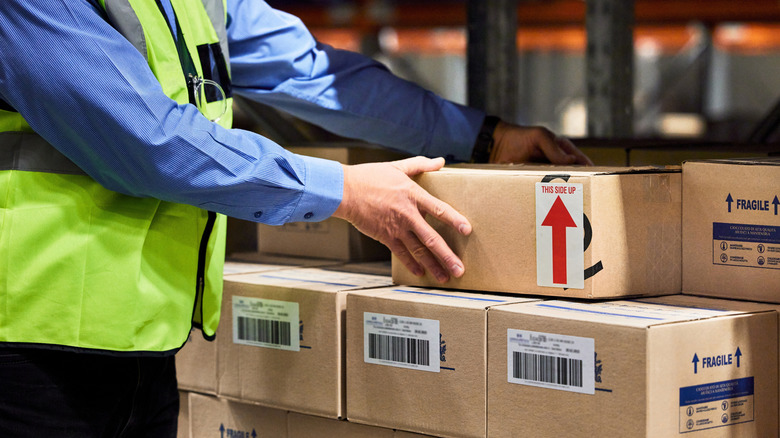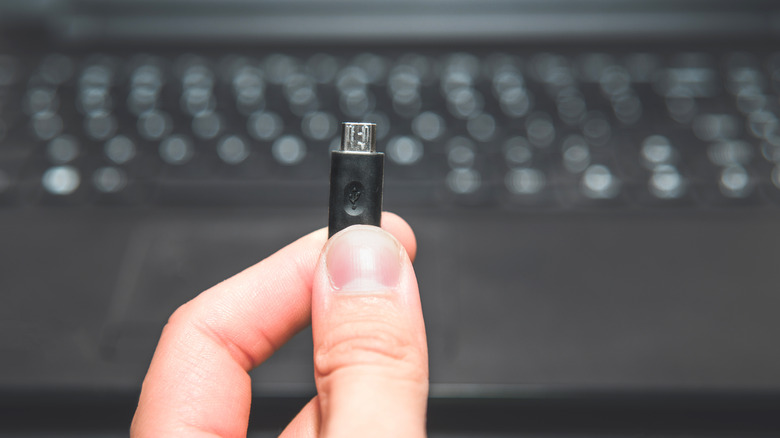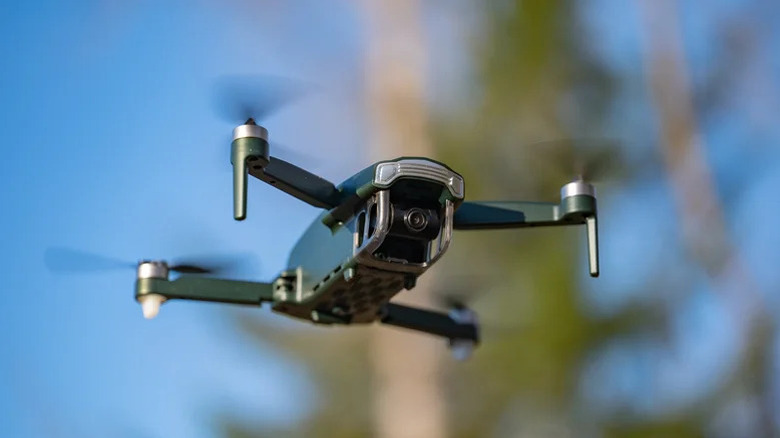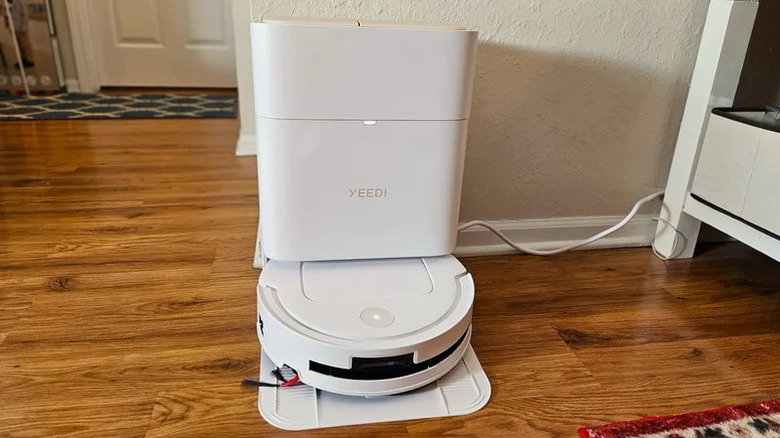5 Things To Consider When Buying Gadgets On Amazon
We may receive a commission on purchases made from links.
Amazon offers shoppers a whole lot of reasons to shop on its platform: There are the perks of Amazon Prime, the promise of low prices, and the convenience of having such a huge range of products all in one place. There are plenty of deals on gadgets to be found on Amazon, both from big-name brands and from smaller manufacturers, but it can be easy to end up with a product that isn't quite what you expected when you clicked "Buy Now."
From knock-offs to older versions of big-name gadgets, there are plenty of reasons to be wary when purchasing gadgets from Amazon. Some types of tech on Amazon might even be worth avoiding altogether. However, if you can avoid being caught out by misleading products or unscrupulous sellers, you might well be able to bag yourself a bargain. Don't let the platform's drawbacks stop you from buying your next gadget on Amazon — just keep these five things in mind the next time you're browsing the retailer's range.
Don't be tricked by keywords in a product name
If you search on Amazon for a gadget from a major tech manufacturer, you're likely to see a mix of that manufacturer's products and knock-offs in the search results. Knock-off gadgets are deliberately designed to look like popular gadgets from big tech brands like Apple and Samsung, but they're actually made by a completely different manufacturer with no affiliation to either company. Most of the time, these knock-offs are sold at significantly lower prices than the real gadget.
Distinctive-looking gadgets such as the Apple Watch are particularly popular targets for makers of these knock-offs, and they often feature keywords like "Apple" or "iPhone" in their product listing title in an attempt to trick buyers into thinking that they're associated with the Cupertino-based manufacturer. Some even appear with the "Amazon's Choice" or "Overall Pick" tags, but Amazon's tag system is merely an algorithmic recommendation based on the platform's sales data. It isn't necessarily reflective of the actual quality or capabilities of a product, and shouldn't be trusted as an expert endorsement when you're shopping for gadgets.
Genuine products will clearly list their manufacturer in their product listing title, so it should be easy to spot at a glance. If you look at a gadget and you can't immediately identify its manufacturer from the title — particularly if it seems cheaper than other products in the search results — then it's usually worth steering clear of.
Check whether the product is sold by a third-party seller
Third-party sellers are a key part of the Amazon ecosystem, but buying gadgets from them comes with some drawbacks. Everything from certain TVs on Amazon to Bluetooth speakers and mobile phones can be sold by third-party sellers, and they often aren't authorized resellers of those items. If you buy from an unauthorized reseller, the gadget manufacturer's warranty might be shortened or even invalidated altogether.
This issue isn't just limited to gadgets, either. Tools from highly-rated brands like Milwaukee are only sold via third-party resellers on Amazon, and as a result, they often aren't covered by the full period of their manufacturer's warranty. In general, it's best to avoid buying both gadgets and tools from third-party sellers on Amazon unless you have a specific reason for doing so.
Some major tech brands, like Apple, sell their products directly through Amazon. Product listings sold directly from these brands will feature a link back to their official Amazon store page — such as the official Apple store — and will be listed as being sold and shipped directly from Amazon. Items from third-party sellers may be listed as shipping from Amazon if they utilize the retailer's warehouse network, but they'll be listed as being sold by a different, unrelated company.
Make sure you're buying the latest version of a gadget
Amazon usually labels its own-brand gadgets to ensure that buyers can distinguish between different generations, but it's a lot less consistent with gadgets from other brands. If you're not careful, it can be easy to inadvertently purchase an older generation of a gadget that might not have the latest features or design improvements. If the product listing specifies which generation of the gadget you're looking at, then it's worth checking for expert reviews for that gadget outside of Amazon to ensure you buy the latest release.
Some product listings also have a release date listed for the gadget, which can be a useful indicator as to whether a product is older than it might look at first glance. If it has a USB connector, it's also worth checking which type of connector it is. A Micro USB connector is usually worth avoiding, since it's a giveaway that the gadget is an older or cheaper design. Many modern USB gadgets will now have a USB-C connector.
Check reviews for the product outside of Amazon
Looking at expert reviews outside of Amazon can help you determine the age of a gadget, but it's also a great way to spot products with suspiciously positive Amazon reviews. SlashGear often puts the latest gadgets through their paces, and every so often, we test a product that received good reviews on Amazon but doesn't cut it against its competitors in our testing.
One notable example is the Gleesfun G11Mini drone we tested in 2024. We found it to be alarmingly prone to ignoring our controller commands and flying wherever it liked, frequently crashing into nearby objects in the process. The camera quality was far, far below its rivals, and the reported battery level would seemingly fluctuate randomly, making it impossible to know how much battery the drone actually had left while it was flying. Gleesfun even sent us a second example of the drone to review, which had all the same problems as the first drone.
Despite our reviewer writing it off as "so deeply flawed that I couldn't recommend it if it was a fraction of its current asking price," the drone has relatively good reviews on Amazon. At the time of writing, it has an average rating of 4.4 out of five stars from over 100 reviews. A buyer just glancing at the Amazon listing without looking elsewhere could conceivably think that the drone looked like an okay deal at its asking price — however, our testing proves that these Amazon reviews can't always be taken at face value.
Don't assume that a sale price is automatically a good deal
As well as taking Amazon's reviews with a pinch of salt, it's worth being skeptical of any product listing's retail price. For many gadgets, the listed retail price on Amazon is pretty arbitrary, and so a supposed discount on that price isn't necessarily an indicator of a good deal.
To take one example, we published a review of the Yeedi M14 Plus robot vacuum on September 29, 2025. In that review, we said that its typical retail price on Amazon was $1,200, but that it was discounted to $600 at the time of the review's writing. At the current time of writing, around a month after that review was published, the Yeedi vacuum's Amazon listing shows its typical price as $699.99, and its discounted price as $529.99. Despite the listing at the time of our initial review showing a supposed 50% discount, the actual sale price has dropped even lower — despite the listing currently only showing a 24% discount.
Even without confusing sales discounts, the pricing of a gadget can fluctuate dramatically over time on Amazon. Continuing with the robot vacuum theme, the Switchbot K10 Plus Combo we reviewed in January 2025 retailed at $799.99 at the time of our review. Today, it's available on Amazon for a retail price of $417.99, despite not being listed as being on sale. The key takeaway here is not to take discounts on Amazon to be particularly meaningful by themselves. It's always worth checking the prices of a gadget at a rival retailer like Best Buy or Newegg to make sure that any claimed discounts on Amazon are actually good deals.





